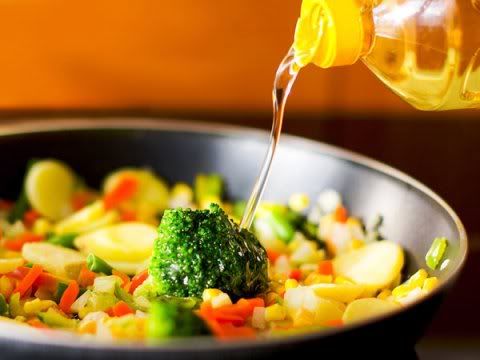ඔබ නිතරම ඔබේ සෞඛ්ය තත්ත්වය ගැන සැලකිලිමත් වෙනවා නේද? එසේනම් ඔබ අසනීප වූ විට දැනගන්නේ කෙසේද? ශ්වසන මාර්ගයේ අසනීපයක් ඇතිවිත උණ ගන්නවා, සොටු දියර ගලනවා, කැස්ස එනවා. ආහාර මාර්ගයේ නම් බඩ රිදීම, වමනය, පාචනය ආදිය සිදු වෙනවා. මෙවැනි අමාරුකම් නැති විට අපි "හොඳ " සෞඛ්ය තත්ත්වයෙන් ඉන්නවා යැයි සිතනවා.
නමුත්, අපට නොපෙනෙන රෝග තත්ත්වයක් අප සතුව තිබිය හැකියි. "දුෂ්පෝෂණය" එවැනි රෝග තත්ත්වයක්. දුෂ්පෝෂණය යන්නට මන්ද පෝෂණය මෙන්ම අධි පෝෂණයද ඇතුලත්.
දුප්පත් පොහොසත් භේදයකින් තොරව ,අපේ වැරදි ආහාර පුරුදු නිසා අප සියල්ලෝම ඉහත සඳහන් කල ආකාර දෙකටම ලක්වීමට පුළුවන්.
මමත් මන්ද පෝෂණයෙන්/ අධි පෝෂණයෙන් පෙලෙනවාද?
මෙය දැන් ඔබට අනිවාර්යයෙන්ම ඇතිවන ප්රශ්නයක්. පිලිතුර හරිම සරලයි.ඔබේ ශරීර ස්කන්ධ දර්ශකය(BMI) ගණනය කරන්න.
BMI අගය යනු කුමක්ද?
මෙය ශරීරයේ උසට සරිලන බරක් තිබීම පිලිබඳ මිනුමකි.මෙය බර(kg)/උස(m)^2 යන සමීකරණයෙන් ලබාගත හැක. ලාංකීය වැඩිහිටියකුගේ මෙය 18 kg/m2 හා 23.5 kg/m2 අතර තිබීම අපේක්ෂා කෙරේ.මෙම අගයට වැඩි හෝ අඩු වීම දුශ්පෝෂණ තත්ත්වයකි.
ඔබේ වයසට අනුව නිවැරදි අංකය(A,B,C) වෙත ගමන් කරන්න.
A.ඔබ පාසැල් ශිෂ්යයෙකු(වයස අවු.5-18)නම්,
වයස අවුරුදු 5ට වැඩි ඕනෑම වයසක අයෙකුට ,මෙම වගුව ඇසුරෙන් තම BMI අගයත් ,තිබිය යුතු අවම හා උපරිම බරත් දැකගත හැකියි.මෙහිදී ඔබ +2 හා -2 අතර කලාපයේ සිටීනම් එය නිවැරදි BMI අගයක් වෙනවා.
BMI අගය මෙමගින් දැන ගන්න
පිරිමි ළමුන් සඳහා නම්, දැන් එයමෙතැන click කර ලැබෙන ප්රස්ථාරයට ඇතුලත් කර ඔබ සිටිනා ශරීර ස්කන්ධ දර්ශක කලාපය හඳුනා ගන්න.
ගැහැනු ළමුන් සඳහා නම්, දැන් එය දැන් එයමෙතැන click කර ලැබෙන ප්රස්ථාරයට ඇතුලත් කර ඔබ සිටිනා ශරීර ස්කන්ධ දර්ශක කලාපය හඳුනා ගන්න.
B.ඔබ වැඩිහිටියකු(අවු.18ට වැඩි ) නම්,
වයස අවුරුදු 18ට වැඩි ඕනෑම අයෙකුට පහත මෘදුකාංගයට උස හා බර ලබාදීමෙන් BMI අගය ලබාගෙන එය ප්රස්තාර ගත කරගත හැකියි.මෙහිදී ඔබ කහපාට කලාපයේ සිටීනම් එය නිවැරදි BMI අගයක් වෙනවා.
C.වයස අවු. 5ට අඩු දරුවෙක් නම්,
අවුරුදු 5ට අඩු දරුවන් සඳහා පහත දැක්වෙන වගු භාවිතා කර ඔවුන්ගේ දිග(අවුරුදු 2ට අඩු දරුවන් සඳහා දිග භාවිතා වේ) උසට අනුව බර වැටෙන්නේ කුමන වර්ණ තීරුවටදැයි බලා ගන්න. දරුවා මෙහි කොළ හෝ ළා කොළ පාට කලාපයේ සිටිය යුතුයි.
ඔබට ඔබේ පෝෂණ තත්ත්වය පිළිබඳ ගැටළු ඇත්නම්,
පෝෂණ තොරතුරු ඒකකය, වෛද්ය පර්යේෂණ ආයතනය, බොරැල්ල වෙත ඒවා යොමු කරන්න.ඒවාට පිළිතුරු ලබා දීමට අප සැම විටම සැදී පැහැදී සිටිනවා.
written by Dr.Wedisha Gankanda
නමුත්, අපට නොපෙනෙන රෝග තත්ත්වයක් අප සතුව තිබිය හැකියි. "දුෂ්පෝෂණය" එවැනි රෝග තත්ත්වයක්. දුෂ්පෝෂණය යන්නට මන්ද පෝෂණය මෙන්ම අධි පෝෂණයද ඇතුලත්.
දුප්පත් පොහොසත් භේදයකින් තොරව ,අපේ වැරදි ආහාර පුරුදු නිසා අප සියල්ලෝම ඉහත සඳහන් කල ආකාර දෙකටම ලක්වීමට පුළුවන්.
මමත් මන්ද පෝෂණයෙන්/ අධි පෝෂණයෙන් පෙලෙනවාද?
මෙය දැන් ඔබට අනිවාර්යයෙන්ම ඇතිවන ප්රශ්නයක්. පිලිතුර හරිම සරලයි.ඔබේ ශරීර ස්කන්ධ දර්ශකය(BMI) ගණනය කරන්න.
BMI අගය යනු කුමක්ද?
මෙය ශරීරයේ උසට සරිලන බරක් තිබීම පිලිබඳ මිනුමකි.මෙය බර(kg)/උස(m)^2 යන සමීකරණයෙන් ලබාගත හැක. ලාංකීය වැඩිහිටියකුගේ මෙය 18 kg/m2 හා 23.5 kg/m2 අතර තිබීම අපේක්ෂා කෙරේ.මෙම අගයට වැඩි හෝ අඩු වීම දුශ්පෝෂණ තත්ත්වයකි.
ඔබේ වයසට අනුව නිවැරදි අංකය(A,B,C) වෙත ගමන් කරන්න.
A.ඔබ පාසැල් ශිෂ්යයෙකු(වයස අවු.5-18)නම්,
වයස අවුරුදු 5ට වැඩි ඕනෑම වයසක අයෙකුට ,මෙම වගුව ඇසුරෙන් තම BMI අගයත් ,තිබිය යුතු අවම හා උපරිම බරත් දැකගත හැකියි.මෙහිදී ඔබ +2 හා -2 අතර කලාපයේ සිටීනම් එය නිවැරදි BMI අගයක් වෙනවා.
BMI අගය මෙමගින් දැන ගන්න
පිරිමි ළමුන් සඳහා නම්, දැන් එයමෙතැන click කර ලැබෙන ප්රස්ථාරයට ඇතුලත් කර ඔබ සිටිනා ශරීර ස්කන්ධ දර්ශක කලාපය හඳුනා ගන්න.
ගැහැනු ළමුන් සඳහා නම්, දැන් එය දැන් එයමෙතැන click කර ලැබෙන ප්රස්ථාරයට ඇතුලත් කර ඔබ සිටිනා ශරීර ස්කන්ධ දර්ශක කලාපය හඳුනා ගන්න.
B.ඔබ වැඩිහිටියකු(අවු.18ට වැඩි ) නම්,
වයස අවුරුදු 18ට වැඩි ඕනෑම අයෙකුට පහත මෘදුකාංගයට උස හා බර ලබාදීමෙන් BMI අගය ලබාගෙන එය ප්රස්තාර ගත කරගත හැකියි.මෙහිදී ඔබ කහපාට කලාපයේ සිටීනම් එය නිවැරදි BMI අගයක් වෙනවා.
C.වයස අවු. 5ට අඩු දරුවෙක් නම්,
අවුරුදු 5ට අඩු දරුවන් සඳහා පහත දැක්වෙන වගු භාවිතා කර ඔවුන්ගේ දිග(අවුරුදු 2ට අඩු දරුවන් සඳහා දිග භාවිතා වේ) උසට අනුව බර වැටෙන්නේ කුමන වර්ණ තීරුවටදැයි බලා ගන්න. දරුවා මෙහි කොළ හෝ ළා කොළ පාට කලාපයේ සිටිය යුතුයි.
ඔබට ඔබේ පෝෂණ තත්ත්වය පිළිබඳ ගැටළු ඇත්නම්,
පෝෂණ තොරතුරු ඒකකය, වෛද්ය පර්යේෂණ ආයතනය, බොරැල්ල වෙත ඒවා යොමු කරන්න.ඒවාට පිළිතුරු ලබා දීමට අප සැම විටම සැදී පැහැදී සිටිනවා.
written by Dr.Wedisha Gankanda
For the English version of this article Click Here | මම ලපය ඉංග්රීසි පවතනය සඳහ මතනට යනන.





















